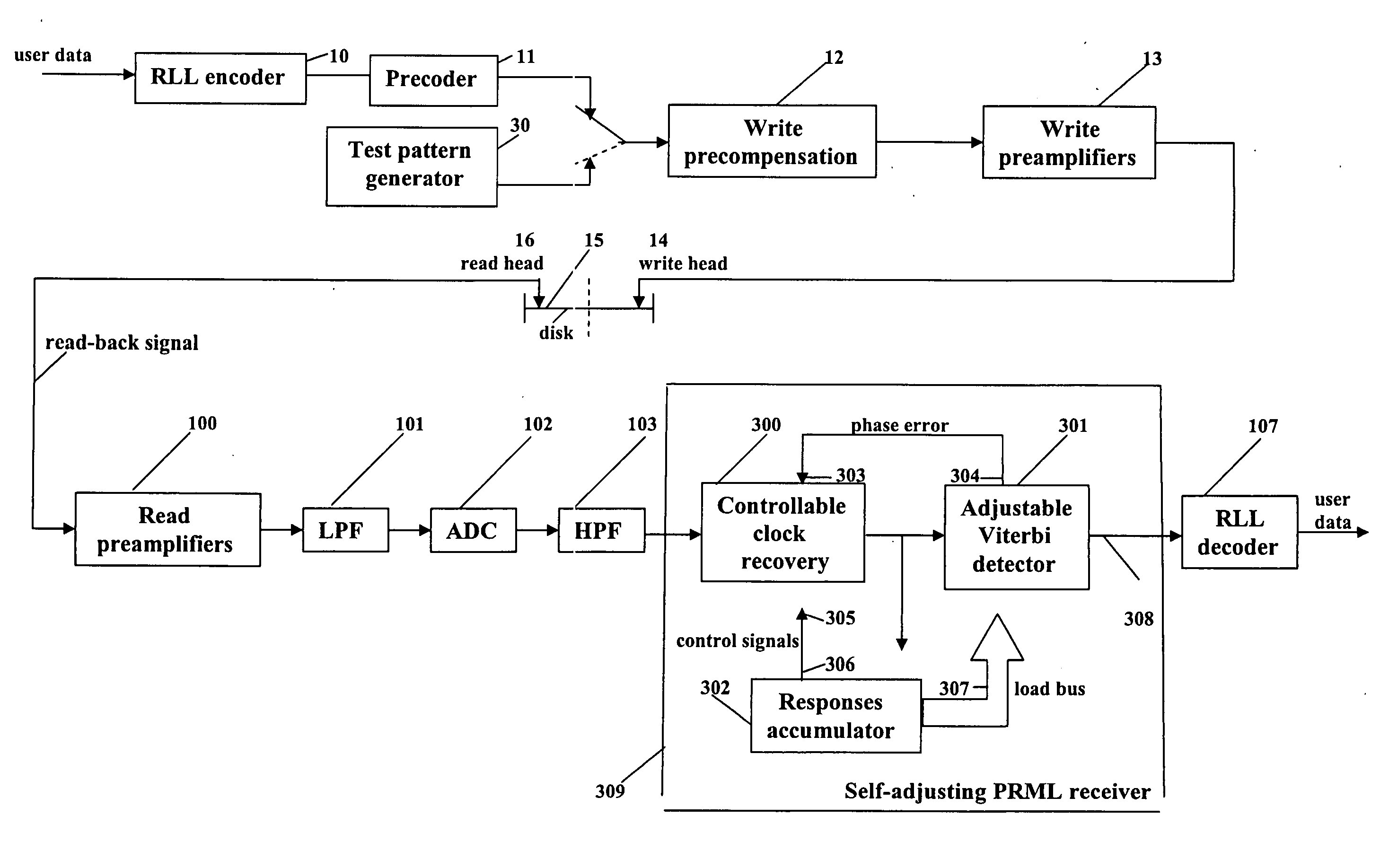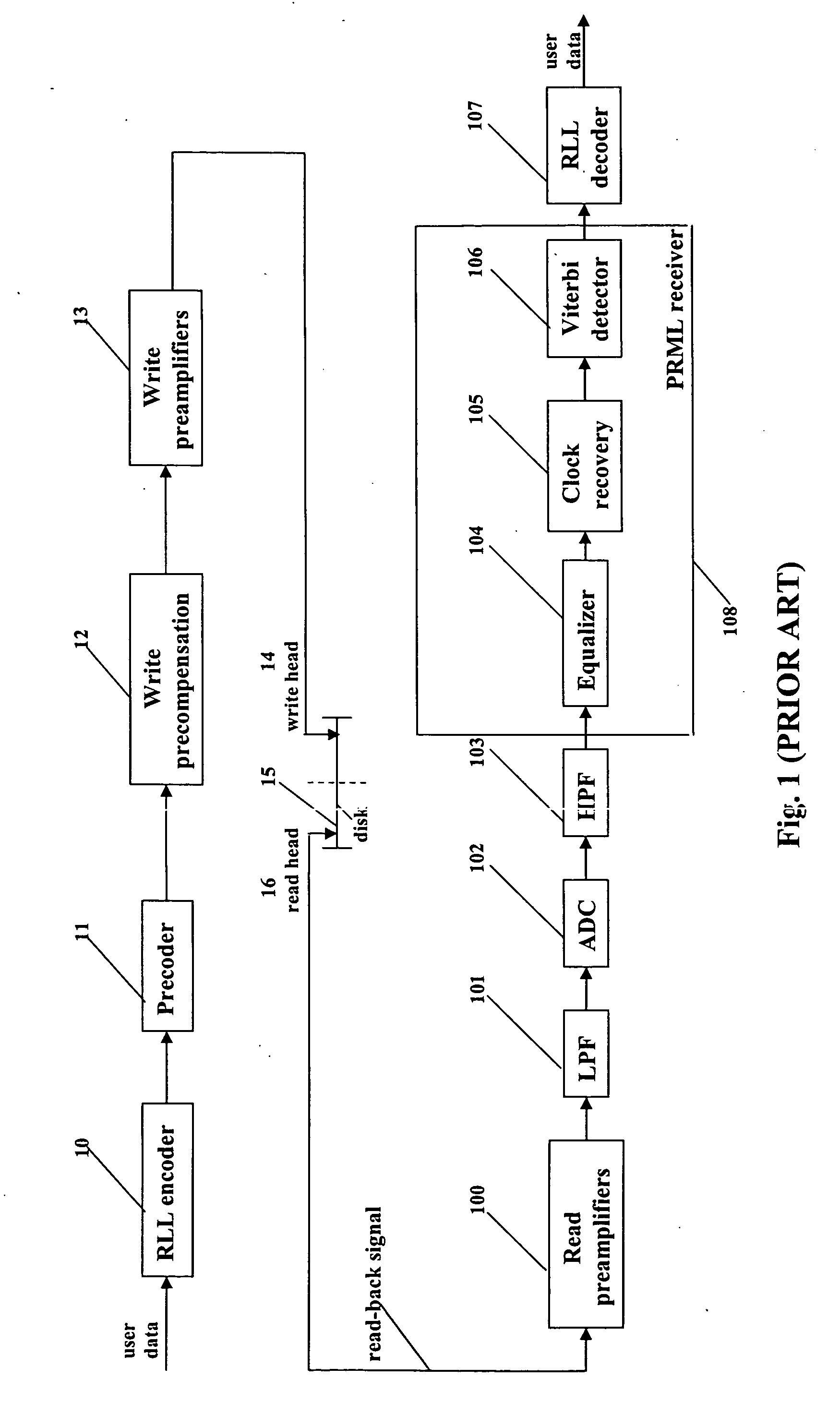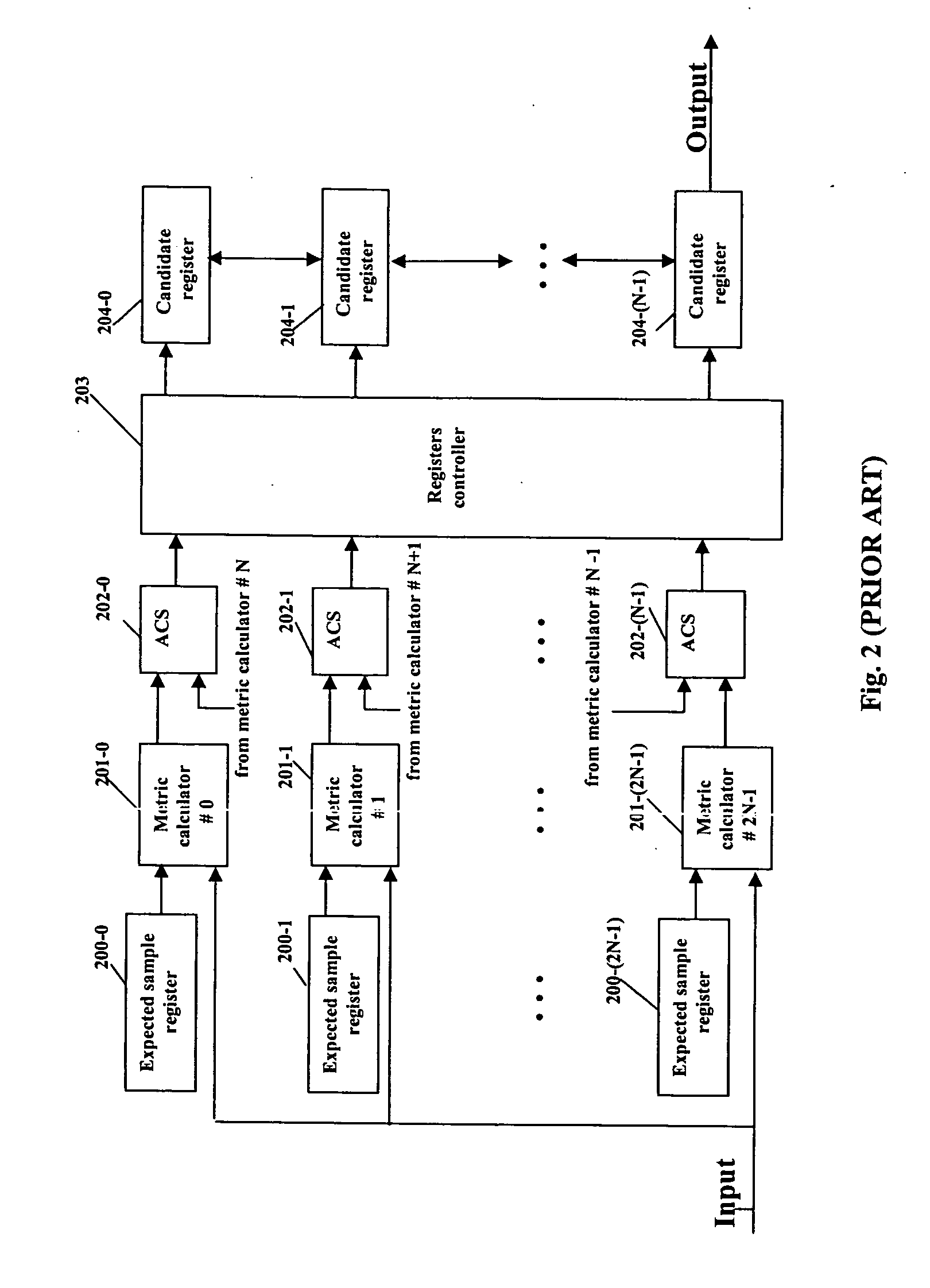Self-adjusting PRML receiver
a receiver and self-adjusting technology, applied in the field of digital signal detection, can solve the problems of increased noise, nonlinear distortion and noise, decreased distance between adjacent magnetization transitions,
- Summary
- Abstract
- Description
- Claims
- Application Information
AI Technical Summary
Benefits of technology
Problems solved by technology
Method used
Image
Examples
Embodiment Construction
[0026] A self-adjusting PRML receiver according to the present invention can operate in one of two modes: a training mode or a detection mode. In the training mode, the self-adjusting PRML receiver reads a special test pattern that was written to a magnetic disk beforehand. The test pattern contains a number of preambles that are evenly distributed along the pattern length. Between the preambles, a special sequence of bits is repeated periodically. This special sequence comprises all possible nonzero binary combinations of a given length L; the position in the sequence where a certain combination appears, is known in advance. The self-adjusting PRML receiver carries out the operation of clock recovery by building a set of read-back signal samples in correct timing positions with exactly one sample per each test pattern bit. Preambles that occur often enough, enable the self-adjusting PRML receiver to maintain the correct phase of the samples despite possible disk rotation speed fluc...
PUM
 Login to View More
Login to View More Abstract
Description
Claims
Application Information
 Login to View More
Login to View More - R&D
- Intellectual Property
- Life Sciences
- Materials
- Tech Scout
- Unparalleled Data Quality
- Higher Quality Content
- 60% Fewer Hallucinations
Browse by: Latest US Patents, China's latest patents, Technical Efficacy Thesaurus, Application Domain, Technology Topic, Popular Technical Reports.
© 2025 PatSnap. All rights reserved.Legal|Privacy policy|Modern Slavery Act Transparency Statement|Sitemap|About US| Contact US: help@patsnap.com



